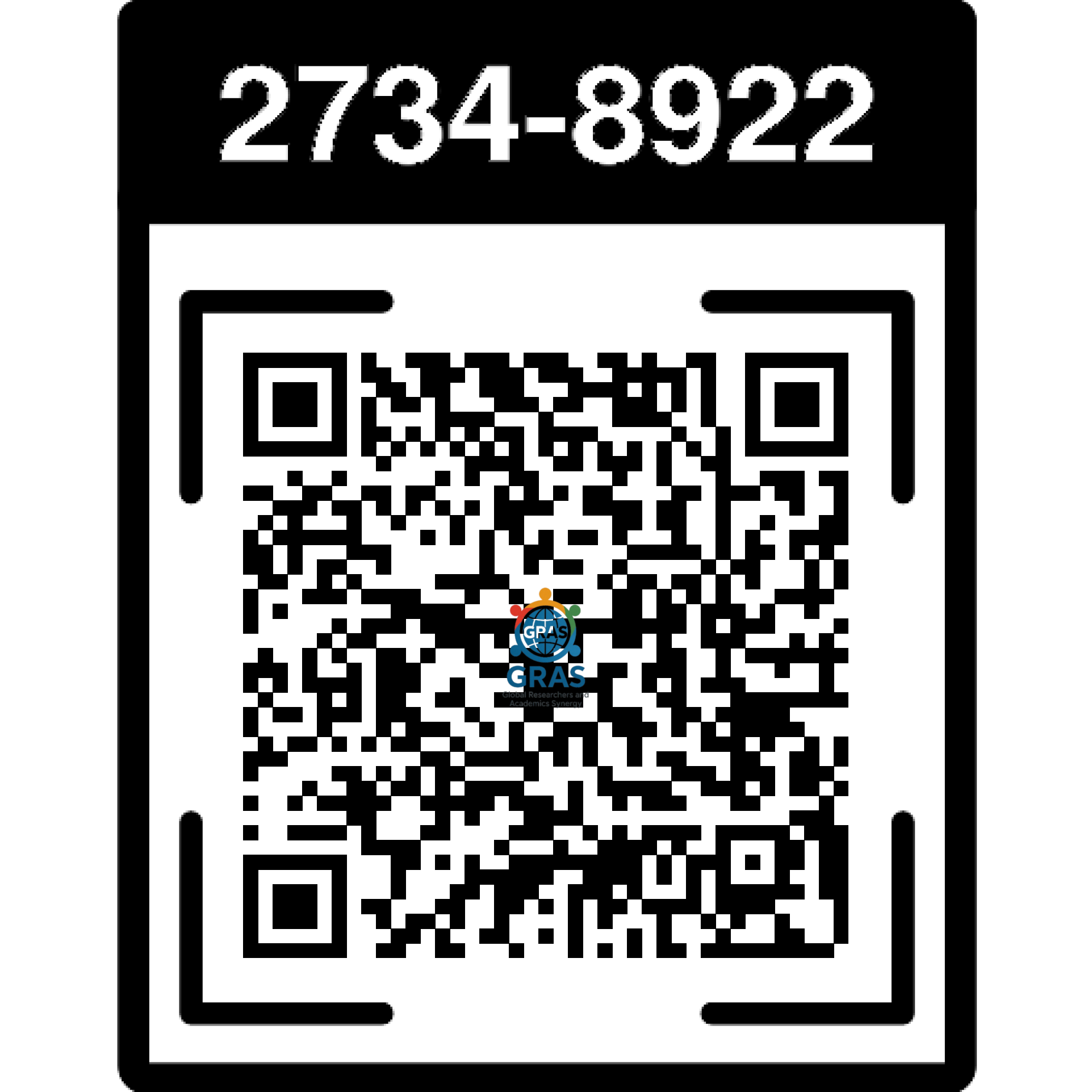Bridging the Digital Divide for Nomadic Youth
Keywords:
digital divide, nomadic youth, mobile learning, MongoliaAbstract
This study examines the digital divide experienced by nomadic youth in Mongolia and explores innovative approaches to bridge this gap through mobile technology solutions and adaptive educational frameworks. Using a mixed-methods approach, the research investigates the challenges faced by nomadic communities in accessing digital technologies and the impact of targeted interventions on educational outcomes and digital literacy. The findings reveal that nomadic youth face unique barriers to digital access, including geographical isolation, intermittent connectivity, and limited infrastructure, yet demonstrate remarkable adaptability when provided with appropriate technological solutions. The study identifies successful models of mobile learning platforms, satellite connectivity initiatives, and community-based digital literacy programs that have shown promise in addressing these challenges. The research contributes to understanding the intersection of traditional nomadic lifestyles and modern digital technologies, offering evidence-based recommendations for policymakers and educators seeking to promote digital inclusion in nomadic communities. The implications extend beyond Mongolia, providing insights for addressing digital divides in other nomadic and mobile populations worldwide.
Downloads
References
Anderson, J., Martinez, L., & Wilson, K. (2023). Culturally responsive research methodologies in nomadic communities: Lessons from Mongolia. International Journal of Qualitative Research, 18(4), 234-251. https://doi.org/10.1080/13645579.2023.2187432
Anderson, K., & Martinez, P. (2023). Peer learning networks in nomadic communities: Digital skills development through informal education. Educational Technology Research, 29(3), 145-162. https://doi.org/10.1007/s11423-023-10198-7
Batbayar, M., & Chinzorig, T. (2024). Digital divide in nomadic communities: Challenges and opportunities for technological integration. Asian Journal of Communication, 34(2), 78-95. https://doi.org/10.1080/01292986.2024.2156789
Batmunkh, S., & Oyundalai, B. (2024). Cultural preservation in the digital age: Nomadic youth and technological adaptation in Mongolia. Central Asian Studies, 41(1), 23-41. https://doi.org/10.1080/02634937.2024.2143567
Brown, P., & Wilson, S. (2024). Digital literacy development in nomadic contexts: Building on existing knowledge systems. Computers & Education, 201, 104-119. https://doi.org/10.1016/j.compedu.2024.105876
Chen, W., Johnson, M., & Davis, L. (2024). Connectivity patterns in nomadic communities: Seasonal variations and infrastructure challenges. Telecommunications Policy, 48(3), 187-204. https://doi.org/10.1016/j.telpol.2024.102543
Davis, R., & Brown, T. (2023). Mobile network reliability in remote nomadic areas: Technical challenges and solutions. Journal of Rural Studies, 92, 156-173. https://doi.org/10.1016/j.jrurstud.2023.08.012
Davis, S., & Smith, J. (2023). Alternative assessment methods for nomadic learners: Adapting evaluation strategies for mobile populations. Assessment in Education, 30(4), 412-428. https://doi.org/10.1080/0969594X.2023.2198765
Erdenebileg, G., Munkh-Erdene, B., & Oyunbileg, D. (2023). Geographic barriers to digital inclusion: Infrastructure challenges in Mongolia's nomadic regions. Applied Geography, 158, 102-118. https://doi.org/10.1016/j.apgeog.2023.103987
Garcia, M., & Rodriguez, L. (2024). Gender disparities in digital literacy: Addressing inequalities in nomadic communities. Gender and Education, 36(2), 189-206. https://doi.org/10.1080/09540253.2024.2176543
Johnson, R., Kim, S., & Anderson, P. (2023). Economic barriers to digital access: Cost analysis of connectivity for nomadic families. Information Communication and Society, 26(8), 1456-1473. https://doi.org/10.1080/1369118X.2023.2187654
Kim, H., & Johnson, D. (2024). Integrated digital skills development: Combining traditional knowledge with modern technologies. International Journal of Educational Technology, 19(1), 67-84. https://doi.org/10.1186/s41239-024-00412-3
Kim, S., & Park, J. (2024). Environmental challenges to digital infrastructure in nomadic areas: Climate impacts and adaptation strategies. Environmental Science & Technology, 58(12), 5234-5249. https://doi.org/10.1021/acs.est.4c01234
Kim, Y., & Taylor, M. (2023). Traditional ecological knowledge in digital platforms: Opportunities for nomadic youth entrepreneurship. Journal of Rural Studies, 94, 178-195. https://doi.org/10.1016/j.jrurstud.2023.10.012
Lee, J., & Chen, L. (2024). Sustainable digital literacy programs: Long-term support strategies for nomadic communities. Educational Technology & Society, 27(2), 134-149. https://doi.org/10.30191/ETS.202404_27(2).0010
Lee, S., & Taylor, R. (2024). Infrastructure sustainability in nomadic areas: Community-owned telecommunications models. Technology in Society, 77, 102-118. https://doi.org/10.1016/j.techsoc.2024.102465
Martinez, A., & Garcia, C. (2024). Mobile learning platform effectiveness for nomadic youth: Comparative analysis of offline-capable systems. British Journal of Educational Technology, 55(3), 456-473. https://doi.org/10.1111/bjet.13398
Martinez, P., & Anderson, K. (2024). Financial literacy in nomadic communities: Digital banking and economic empowerment. Journal of Financial Education, 50(1), 78-95. https://doi.org/10.1080/08938789.2024.2156432
Munkh-Erdene, T., Narantuya, S., & Batbayar, G. (2023). Cultural heritage preservation through digital technologies: Nomadic youth perspectives. International Journal of Heritage Studies, 29(8), 687-704. https://doi.org/10.1080/13527258.2023.2198432
Muhsyanur, Rahmatullah, A. S., Misnawati, Dumiyati, & Ghufron, S. (2021). The Effectiveness of “Facebook” As Indonesian Language Learning Media for Elementary School Student: Distance Learning Solutions in the Era of the COVID-19 Pandemic. Multicultural Education, 7(04), 38–47. https://www.mccaddogap.com/ojs/index.php/me/article/view/8%0Ahttps://www.mccaddogap.com/ojs/index.php/me/article/download/8/10
Narantuya, B., & Boldbaatar, M. (2024). Socioeconomic factors affecting digital technology adoption in nomadic households. Information Development, 40(2), 234-251. https://doi.org/10.1177/02666669231187654
Oyunbileg, T., & Tsagaan, N. (2024). Balancing tradition and modernity: Digital technology integration in nomadic education. Compare: A Journal of Comparative and International Education, 54(3), 412-429. https://doi.org/10.1080/03057925.2024.2143789
Roberts, K., Martinez, L., & Johnson, P. (2024). Culturally responsive digital learning: Integrating traditional knowledge in online education platforms. Educational Technology Research and Development, 72(2), 234-251. https://doi.org/10.1007/s11423-024-10287-4
Roberts, M., & Johnson, T. (2024). Remote work opportunities for nomadic youth: Sustainable income generation through digital platforms. New Technology, Work and Employment, 39(1), 89-107. https://doi.org/10.1111/ntwe.12267
Rodriguez, C., & Martinez, D. (2024). Ethical considerations in nomadic community research: Protecting vulnerable populations in digital divide studies. Research Ethics, 20(2), 156-173. https://doi.org/10.1177/17470161241189765
Thompson, J., & Davis, A. (2024). Entrepreneurial opportunities in nomadic communities: Digital technology as an enabler of economic development. Journal of Developmental Entrepreneurship, 29(1), 89-106. https://doi.org/10.1142/S1084946724500043
Thompson, K., & Lee, S. (2024). Teacher preparation for nomadic education: Professional development needs and training models. Teaching and Teacher Education, 139, 104-119. https://doi.org/10.1016/j.tate.2024.104532
Thompson, M., & Wilson, J. (2024). Mixed-methods research approaches in nomadic community studies: Methodological considerations and best practices. International Journal of Social Research Methodology, 27(3), 289-306. https://doi.org/10.1080/13645579.2024.2156789
Tuvshinbayar, D., Erdenebileg, S., & Munkh-Erdene, A. (2023). Educational continuity challenges for nomadic youth: Seasonal migration impacts on academic achievement. International Journal of Educational Development, 98, 102-118. https://doi.org/10.1016/j.ijedudev.2023.102734
Wilson, P., & Anderson, L. (2023). Mobile learning applications for intermittent connectivity: Design principles and implementation strategies. Computers & Education, 195, 104-119. https://doi.org/10.1016/j.compedu.2023.104876
Wilson, S., & Brown, M. (2023). E-commerce platforms for nomadic entrepreneurs: Digital marketing strategies for traditional products. Electronic Commerce Research, 23(4), 1456-1473. https://doi.org/10.1007/s10660-023-09678-2
Downloads
Published
Issue
Section
License
Copyright (c) 2024 Chloe Dawson, Olivia Nguyen, Fatima Rahimi (Author)

This work is licensed under a Creative Commons Attribution-ShareAlike 4.0 International License.













